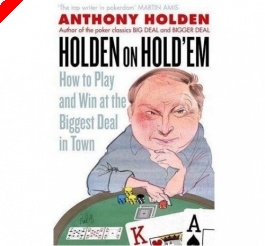Poker Book Review: 'Ken Warren Teaches Texas Hold'em 2'

One might expect the second volume of a poker strategy text to address advanced concepts or at least build further on ideas conveyed in Volume 1, but that is not exactly the case in Ken Warren Teaches Texas Hold'em 2. Poker writer and professional player Ken Warren once again remains in introductory mode in his seventh <a href=https://www.purequalitydomains.com/books/>poker book</a>, which despite being nominally presented as a sequel still primarily targets the novice player entering a poker room to play his or her first session of low-stakes limit hold'em.
As with Warren's previous titles, including his two previous books devoted to <a href=https://www.purequalitydomains.com/poker-rules/texas-holdem.htm>Texas hold'em</a>, Winner's Guide to Texas Hold'em Poker (1996) and Ken Warren Teaches Texas Hold'em (2003), Warren here employs a casual, conversational style while addressing a variety of concepts specific to live low-stakes limit hold'em. Indeed, in terms of organization and presentation, Warren's new book appears even more relaxed than his earlier titles �� a good strategy, perhaps, for attracting timid newcomers to poker (and poker books), though not so much for achieving the level of precision the subject often warrants.
In the introduction, Warren suggests his approach for the book is modeled on the one used by Dr. David Reuben, author of Everything You Wanted to Know About Sex (But Were Afraid to Ask). In other words, here Warren states his intention to employ the "discussion method" whereby the instruction will be delivered via a question-and-answer format. The first question of chapter one �� "What is Texas Hold'em?" �� gives an indication of Warren's target audience (if that weren't already clear). However, after spending a couple of chapters on "Basic Stuff" and "Hand Selection," Warren abandons the Q&A format for most of the rest of the book (he returns to it for the latter chapters), perhaps a good decision, as the format at times tends to introduce unnecessary awkwardness into the text.
The next chapter, "Low Limit Strategy and Concepts," unexpectedly appears to target higher-stakes, experienced LHE players as it espouses the benefits of dropping down in limits to refresh one's thinking about the game. Warren then refocuses on the beginning player, and over the next several chapters presents a lengthy list of common mistakes made at the lower stakes ($2/$4 to $10/$20). These chapters not only cover mistakes made before the flop, on the flop, on the turn, and on the river, but mistakes made before and after sessions as well.
Some of the advice offered during these chapters (which make up nearly half of the book) is well-founded, although the lack of precision alluded to above often does mitigate the usefulness of certain tips. To describe just one example, Warren warns against getting into the habit of calling a preflop raise from the big blind when one is only up against the raiser, and lists several good reasons why this is often an unprofitable play. However, among the list of reasons, Warren says that after calling that initial raise "you're only getting 1 to 1 pot odds for bets after the flop" (a statement he repeats elsewhere in the book). Readers with some experience in limit hold'em understand what Warren intends to say here �� that with only two players remaining, each player will be contributing the same amount to the pot from this point forward as long as both stay in the hand. However, it is imprecise to describe one's pot odds as "1 to 1" for these post-flop bets, a fact that the novice player may not recognize.
Less concerning are organizational problems that crop up during these middle chapters (e.g., before we get out of the chapter on "Mistakes Made Before the Game" we are already talking about mistakes made during play such as "Playing Too Many Hands" or "Playing Too Aggressively"). Much of the instruction here reiterates what Warren has written before, and indeed generally echoes a lot of so-called "received wisdom" regarding limit hold'em, although there are moments when Warren goes against the grain as well.
The book concludes with a couple of chapters in which Warren answers various questions that have been emailed to him over the years, including some that are poker-related and "personal" ones, too. These questions do not solely concern limit hold'em, but also cover other forms of poker, tournaments, the logistics of playing live, and more. Some provide occasions for Warren to share anecdotes from his own experiences at the tables ("What's the weirdest hand you've ever won?"). This latter portion of the book is certainly the most entertaining. In fact, one gets the sense from these chapters that Warren is perhaps better suited as a storyteller than a strategist.
Warren has clearly carved a niche for himself among his target audience, explicitly identified near the conclusion of Ken Warren Teaches Texas Hold'em 2 as "the non-player and the beginning poker player." His informal, easy-to-read style likely has had much to do with his success, although one has to say the general lack of precision (among other factors) make Warren a rather less useful resource for more serious students of the game.








